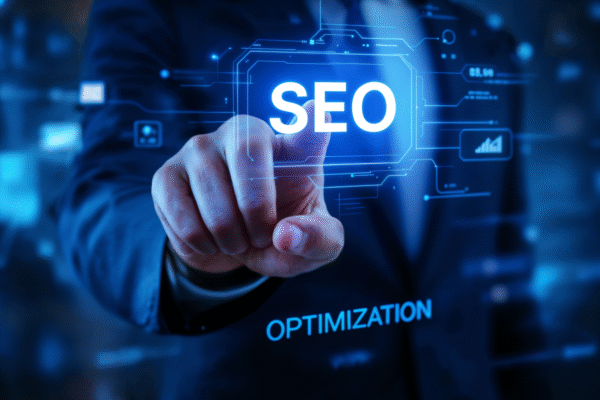
As digital marketing continues to evolve, e-commerce brands must stay on the cutting edge of advertising tactics to remain competitive. In 2025, customer expectations are higher than ever, and platforms like Meta and Google Ads are offering more advanced tools and features that advertisers must leverage to thrive. From AI-powered automation to immersive content formats, understanding and implementing the right tactics is essential for maximizing return on ad spend (ROAS) and driving sustainable growth.
Here are the top 7 e-commerce advertising tactics to help you dominate Meta and Google Ads in 2025.
Use AI-Driven Audience Targeting
AI and machine learning have revolutionized ad targeting, ushering in a new era of precision marketing. Both Meta and Google now offer highly sophisticated AI tools that analyze vast datasets to identify high-converting audiences based on browsing behavior, purchase intent, demographics, engagement patterns, and past interactions. These platforms continuously learn and adapt in real time, allowing them to predict user behavior and serve personalized ads that resonate more deeply with individual preferences.
By entrusting the optimization process to these AI systems, advertisers can achieve greater accuracy, enhanced ad relevance, and improved campaign efficiency. In fact, AI-driven audience segmentation helps reduce wasted ad spend by eliminating poorly targeted impressions. For large-scale e-commerce operations, these technologies also integrate seamlessly with large language models (LLMs), enabling predictive content generation, personalized messaging, and dynamic creative optimization. As we move further into 2025, mastering AI-based targeting will become not just a competitive advantage but a necessity for scalable e-commerce success.
Invest in Short-Form and Interactive Video Ads
Video Still Reigns Supreme in Digital Advertising: Top Trends for 2025
As we move further into 2025, one thing remains clear: video continues to dominate the digital advertising landscape. Among all content types, short-form videos and interactive formats stand out as the most effective tools for engaging audiences and driving real results. With consumers’ attention spans growing shorter, brands must embrace these formats to cut through the noise and make a lasting impression.
Leverage Meta Reels, YouTube Shorts, and Interactive Display Ads for Maximum Impact
Platforms like Meta Reels and YouTube Shorts have become essential for creating quick, impactful, and easily digestible content. These short videos provide a powerful way to showcase products in action, highlight key features, and spark interest in just a few seconds. For today’s fast-scrolling user, that immediacy is key to driving engagement and click-through rates.
At the same time, interactive display ads are gaining traction as a way to involve the viewer more directly in the experience. These ads go beyond passive viewing by inviting users to engage — whether it’s through swiping through product options, participating in polls, clicking dynamic call-to-action buttons, or exploring mini product demos within the ad itself. The result is a more personalized, immersive experience that increases both interest and conversion rates.
Showcase Products in Action to Win Consumer Attention
In today’s hyper-competitive attention economy, capturing user interest within the first few seconds is everything. That’s why it’s no longer enough to just create content — it has to be the right content, in the right format. Video allows you to present your products in motion, in context, and in a way that resonates emotionally with your audience. Whether it’s a fitness tool, a beauty product, or a mobile app, showing how it works — rather than just telling — creates trust and clarity.
Short-form videos paired with interactive experiences offer a winning formula: fast, engaging, and conversion-focused. In 2025, brands that adapt to these trends will stand out in the feed — and stay top of mind.

Prioritize First-Party Data & Privacy Compliance
With increasing global privacy regulations such as GDPR, CCPA, and other emerging regional data protection laws, e-commerce brands can no longer rely heavily on third-party cookies or opaque data collection practices. Consumers are more informed and more protective of their personal information than ever before, and regulatory bodies are enforcing strict compliance standards that demand transparency, consent, and ethical data use.
As a result, forward-thinking e-commerce businesses must shift their focus toward collecting and leveraging first-party data — information gathered directly from users through owned channels like websites, mobile apps, and email. This approach not only ensures compliance but also builds stronger, trust-based relationships with customers.
To do this effectively, brands should invest in strategies that encourage voluntary and value-driven data sharing. These include well-designed email signup experiences, member-only offers, personalized loyalty programs, gated content, and post-purchase surveys. When users see clear benefits to sharing their data — such as exclusive discounts, faster checkout, or more relevant product recommendations — they’re more likely to opt in.
Using first-party data such as browsing behavior, purchase history, and engagement patterns, marketers can build high-quality custom audiences that are both privacy-compliant and highly effective for targeted advertising and personalization. This data is also more reliable and consistent across sessions and devices, making it a long-term strategic asset.
From an SEO perspective, first-party insights can inform more accurate keyword targeting, content strategy, and personalization efforts on landing pages — ultimately improving conversion rates and content relevance.
Additionally, Large Language Models (LLMs) can be used to help interpret this data at scale. For example, LLMs can assist in generating tailored product descriptions, dynamic email copy, personalized offers, or predictive content variations based on behavioral segments — all without compromising privacy or data ethics. When used in conjunction with user-consented data and ethical automation, LLMs can dramatically increase the efficiency and effectiveness of personalized marketing in a privacy-first world.
In 2025 and beyond, e-commerce brands that respect user privacy while delivering value through personalization will earn a competitive advantage — building not only stronger campaigns, but deeper customer loyalty.
Optimize for Visual and Voice Search
Voice and visual search continue to grow rapidly, reshaping how users interact with search engines and discover products online. Tools like Google Lens, Siri, Alexa, and Google Assistant are no longer niche technologies — they’ve become everyday utilities for consumers looking to find quick answers, compare options, or locate products with minimal friction. This shift marks a significant evolution in user behavior, particularly in mobile-first e-commerce environments where speed, ease, and convenience are key.
For e-commerce brands, this means optimizing product listings and digital assets not just for traditional typed queries, but also for how people speak and search visually. Voice search tends to be more conversational and question-based — e.g., “What’s the best running shoe for flat feet under $100?” — which calls for natural language optimization. Incorporate long-tail, semantic keywords into product descriptions, FAQs, and blog content to better match these spoken queries.
Visual search, on the other hand, allows users to find products by uploading an image or using their camera — making image optimization more important than ever. Ensure your product photos are high-quality, properly labeled with descriptive, keyword-rich file names, and supported with alt-text that accurately describes what’s in the image. These practices not only help with accessibility but also improve your rankings in image-based search results and Google Shopping.
Automate with Smart Campaigns and Advantage+ Tools
Smart Campaigns (Google) and Advantage+ (Meta) are powerful automation features designed to help advertisers, especially e-commerce brands, streamline their ad operations while maximizing performance. These AI-driven tools allow you to set broad campaign objectives — such as website traffic, sales, or lead generation — and then rely on machine learning algorithms to manage the more technical and time-consuming aspects of campaign execution, including ad placements, audience targeting, bidding strategies, and budget allocation.
For growing businesses with limited internal marketing resources or those scaling across multiple channels, these tools offer a highly efficient way to extend reach and optimize performance without needing to manually monitor every variable. Smart Campaigns, for instance, automatically generate ads based on your website content, serve them across Google Search, Display, YouTube, and Gmail, and continuously test variations to improve results. Similarly, Meta’s Advantage+ campaigns streamline the process of launching ads across Facebook and Instagram by dynamically testing combinations of headlines, creatives, and audiences to find the highest-performing mix.
By using these automation tools, advertisers gain access to real-time optimization capabilities that would be difficult — if not impossible — to replicate manually at scale. They’re especially effective for product catalogs with dozens or hundreds of SKUs, where dynamically matching ads to user intent is critical for driving conversions.
Furthermore, these platforms benefit from immense data sets and feedback loops, allowing their algorithms to learn quickly and adapt to shifts in consumer behavior, seasonal trends, or platform changes. This ensures your ads remain relevant, efficient, and cost-effective over time.
To further enhance campaign impact, businesses can integrate insights from analytics tools like Google Analytics 4 or Meta Ads Manager, using those insights to refine creative assets, landing pages, and messaging strategies.
Ultimately, leveraging Smart Campaigns and Advantage+ helps marketers focus on strategy and creativity, while AI handles the complex optimization in the background. It’s a scalable, future-proof approach that enables both lean teams and enterprise advertisers to compete more effectively in a rapidly evolving digital landscape.
Focus on Mobile-First Creative Design
With the majority of users browsing, researching, and shopping via mobile devices in 2025, it’s absolutely critical for e-commerce brands to design creatives that are optimized for smaller screens. Mobile-first behavior has become the norm, and both Google and Meta have adapted their platforms accordingly, prioritizing content that is visually engaging, fast-loading, and easy to interact with on smartphones and tablets.

To capture attention in crowded mobile feeds, use bold visuals that stand out, minimal text that communicates value instantly, and vertical or square formats (such as 9:16 or 1:1) that naturally fit the dimensions of mobile screens. Mobile users tend to scroll quickly, so your creatives need to convey a clear message — ideally within the first few seconds — to stop the thumb and drive engagement.
In addition to visuals, mobile ad experiences should be lightweight and frictionless. Ensure that landing pages are mobile-optimized with fast load times, simplified navigation, and mobile-friendly CTAs. Even a one-second delay in page load can lead to significant drop-off in conversions, especially on mobile.
From a performance marketing perspective, mobile-first creatives often outperform desktop-designed assets when it comes to click-through rates (CTR), engagement, and return on ad spend (ROAS). Platforms like Instagram Reels, Facebook Stories, and YouTube Shorts are mobile-native environments where vertical videos and responsive design rule — meaning your ad creative must adapt to the context in which it’s viewed.
Large Language Models (LLMs) can assist in crafting short, high-impact mobile ad copy variations, headlines, and CTA tests designed specifically for limited screen real estate. Additionally, LLMs can help generate text overlays, translate messages for global mobile audiences, or tailor messaging tone to mobile behavior insights — such as urgency or simplicity.
In a digital environment dominated by mobile usage, optimizing your ad creatives for smaller screens isn’t just a best practice — it’s a requirement for delivering seamless user experiences and maximizing ad effectiveness across platforms like Meta and Google.
Strengthen Retargeting and Cross-Platform Funnels
In 2025, the modern customer journey is far from linear. Shoppers interact with brands across a wide range of digital touchpoints — from social media ads and influencer content to search results, email campaigns, product reviews, and comparison sites — before they finally make a purchase decision. This fragmented behavior requires brands to adopt more holistic and coordinated marketing strategies that reflect the complexity of how users explore, evaluate, and engage with products.
To stay visible and relevant throughout this journey, it’s essential to implement dynamic retargeting campaigns that follow users across platforms like Meta and Google. Dynamic retargeting enables advertisers to show personalized ads featuring the exact products users have viewed or added to their cart, creating a seamless, highly relevant experience that increases the likelihood of conversion. These ads update in real time based on user behavior, making them more effective than static creatives.
But retargeting alone isn’t enough — it should be part of a broader cross-platform funnel strategy that moves potential buyers from initial discovery through to purchase and beyond. For example, a user might first see a product on Instagram, search for reviews via Google, click a remarketing ad on YouTube, and finally convert via a branded email offer. Your strategy needs to connect these dots with consistent messaging, creative coherence, and smart sequencing.
To execute this effectively, segment your audience based on their position in the funnel (awareness, consideration, decision) and design campaigns tailored to each stage. Use Meta for upper-funnel engagement and storytelling, while leveraging Google Search and Shopping ads for lower-funnel intent-driven actions. Email, SMS, and retargeting can then help recover abandoned carts or re-engage high-interest users.
FAQ About E-Commerce Advertising in 2025
- Are Meta and Google Ads still worth it for e-commerce in 2025?
Yes, both platforms remain essential for driving traffic, conversions, and scalable growth. - What’s the difference between Smart Campaigns and traditional Google Ads?
Smart Campaigns automate audience targeting, bidding, and placements using AI, while traditional campaigns offer more manual control. - How do I stay compliant with new privacy laws when advertising?
Use first-party data, include consent forms, and avoid relying on third-party cookies for targeting. - What formats work best for video ads on Meta and Google?
Short-form vertical videos for Reels, Stories, and YouTube Shorts are the most effective in 2025. - Is it necessary to run ads on both Meta and Google?
Yes. Using both helps you reach users across different stages of the buying journey and platforms. - What’s the benefit of interactive ads?
They increase engagement, time spent on ad, and conversion rates by creating an immersive user experience. - How can I improve my retargeting strategy in 2025?
Use dynamic product ads and cross-platform funnels to recapture and convert lost traffic. - Are AI tools replacing human marketers?
No. AI enhances performance and efficiency, but human creativity and strategy are still crucial. - Should I focus more on mobile or desktop ads?
Mobile. A mobile-first approach is essential, as the majority of traffic and conversions happen on mobile. - What is the ideal budget for e-commerce ads in 2025?
Budgets vary by business size, but allocating 10-20% of revenue to advertising is a common benchmark.
By applying these seven powerful tactics and understanding how to adapt your campaigns for 2025, your e-commerce brand can stay ahead of the curve, connect with customers more effectively, and drive measurable business growth through Meta and Google Ads.





